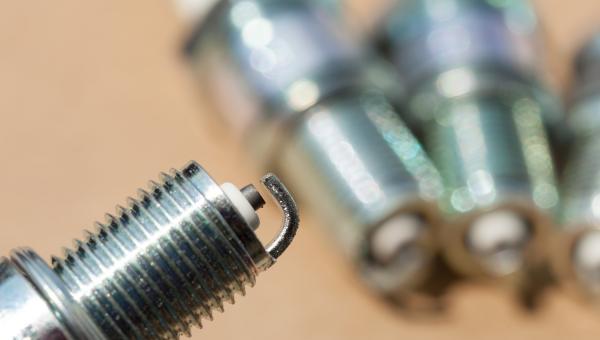Test Drive Notes Library
-
 Pros
Pros
- Mileage. This is the plug in hybrid version of BMW’s mid size SUV, the X5. It combines a six-cylinder, 282 hp gasoline engine with a 111 hp electric motor (389 hp total) and gives you a little more than 30 miles of all electric range. Then it becomes a “gas-electric hybrid” when you run out of pure EV range. The result is excellent mileage for a big, heavy, luxury ute. Even with a 300 mile highway trip (of which only 30 miles were electric), we got 28.5 mpg overall during a week of testing. If you commute 30 miles or fewer, and charge at work, you’ll essentially be driving an EV most of the time. For $4,000 more than the standard six cylinder X5 40i (before any tax credits), why wouldn’t you get this one?
- Meaningful electric range. The previous plug-in X5 got 18-20 miles of pure electric range. That made it a gimmick. Pushing the range over 30 miles makes it much more usable to many more people, and worth the trouble of installing a charger and plugging it in. We hope the next iteration pushes it into the 50 mile range, where the Chevy Volt was in 2009. Then again, it may just go all electric by the time it gets reengineered again.
- Smooth transitions. Generally speaking, the X5 45e pulls away in electric mode, unless you really stomp on the pedal. And it’ll mostly stay in electric mode in normal, day to day driving. When it does switch to the gasoline engine, it’s pretty unnoticeable. It happens on hard acceleration, or on the highway acceleration. You almost never notice it. Only once during our week-long test drive did we really notice the switchover. We started with modest acceleration out of a toll plaza, and then decided to floor it, and there was a momentary hesitation when the electric horsepower topped out before the gasoline engine spooled up and took over. I think we startled it. But really, in day to day use, it’s seamless.
- Luxurious. When BMW first came out with the X5 back in 1999, they were determined to show that a sport utility vehicle could handle like a BMW instead of truck, without the wallowing and leaning that most SUVs exhibited. So stipulated. But with this generation, they’ve just conceded that it’s now a luxury car. The ride is plush, the interior is tasteful and upscale, there’s room for big elbows and broad tuchuses, and the atmosphere is quiet and isolating. It’s a wonderful highway car.
- Good controls. BMW put a good deal of thought into the interior, and gives us hard buttons for the most commonly used items. Heating and cooling are easily adjusted. Presets are available for a wide array of media. Steering wheel buttons control volume and other common features. An excellent, optional head up display projects all your key information, including what’s happening on your phone, through the windshield. The X5 is ergonomically solid.
- iDrive. The latest rendition of BMW’s infotainment interface remains excellent. You can get to the most commonly used sections via hard buttons where your fingers fall on the console, you can scroll around with the rotary controller, or you can use the large, wide display as a touch screen. Do what’s easiest for you. We still like the rotary controller, which is lightyears better than the touch pads were seeing from Lexus and Acura these days.
-
 Cons
Cons
- Not sporty. Like we said up top, this is now a luxury car. The handling is excellent. Steering is precise. There’s little to no body lean. Acceration is plentiful. But there’s nothing sporty about the X5 now. That’s especially true with the electric drivetrain. It’s tuned to coddle, isolate, and pamper. If you want something that has some of the old, sportier character of BMWs, you’ll have to get the smaller X3. Or a Porsche Cayenne.
- High speed automatic braking is optional. You have to order the Driving Assistance Professional Package, which lists for $1,700. That includes adaptive cruise control, with stop and go traffic control, too. It’s an odd choice to cheap out on a key safety feature when you’re selling a $70,000 luxury vehicle ($65,400 base, $81,695 as tested). And by “odd,” we mean greedy.
- Crystal shift knob. Mark our words: When the revolution comes, they will start by killing all of the people with crystal shift knobs. If there's a clearer way to say “I’ve pillaged my way to the top, little people!” than by ordering your car with a crystal shift knob, we haven’t found it yet. Do civilization a favor and skip this tacky extravagance. Fortunately, the torch-wielding mob will never know you opted for the heated arm rests, steering wheel, and center console, so feel free to sneak those in.
- Digital instrument panel. This is a matter of taste, but we’re not fans of the way BMW has switched to digital instrumentation. Their classic instruments — the orange-glowing precise, German-made speedometer and tachometer — were iconic. They looked well engineered, European, sporty, and classic. The new digital representations look like a cheap video game to us. Since it’s all created digitally, why not have a “classic view” option and imitate the real instruments? Audi has done a better job with this.
- Weak blind spot warning lights. In our opinion, blind spot warning lights should easily grab your attention in your peripheral vision — like a car passing you would. For some reason, a number of manufacturers choose to embed small, dim warning lights in their side view mirrors. BMW is one of them. We’d love to see the warnings enlarged and brightened a bit. Or, better yet, adjustable, so that those who believe it’s their constitutional right to change lanes into a UPS truck are free to dim the lights and do so. To BMW’s credit, if you try to change lanes when a vehicle is in your blind spot, the steering wheel will vibrate, too.
Test Drive Notes Library
Get the Car Talk Newsletter
 Pros
Pros Cons
Cons


